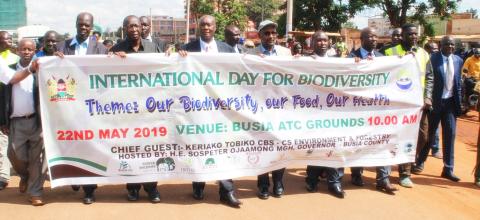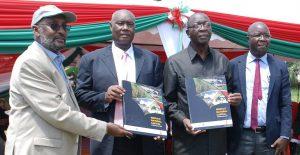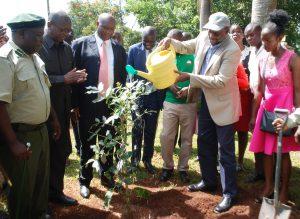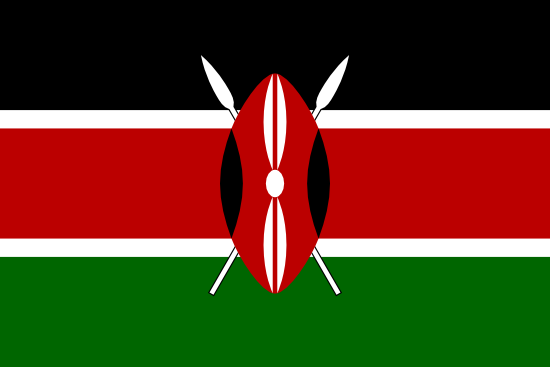Busia County



Busia County is a region located in western Kenya, known for its rich biodiversity and natural beauty. Situated along the border with Uganda, this county boasts a diverse range of ecosystems, which contribute significantly to Kenya's biodiversity. Here, we will explore the unique features and the importance of Busia County's biodiversity.
-
Flora and Fauna Diversity: Busia County is home to a wide variety of plant and animal species. Its lush landscapes include forests, wetlands, grasslands, and riparian ecosystems, all of which support a multitude of flora and fauna. Some of the notable species found here include various bird species, butterflies, mammals like monkeys and antelopes, and numerous plant species, some of which may have medicinal properties.
-
Wetlands and Riparian Areas: The county is crisscrossed by several rivers, including the Nzoia River, which is vital for the region's biodiversity. The wetlands and riparian areas along these water bodies provide habitats for numerous aquatic and terrestrial species. Additionally, these ecosystems help regulate water quality and provide flood control.
-
Birdwatcher's Paradise: Busia County is a haven for birdwatchers. Its wetlands and forests host a plethora of bird species, making it an excellent destination for ornithologists and wildlife enthusiasts. Some bird species, like the African Fish Eagle and the Great Blue Turaco, are regularly spotted here.
-
Conservation Efforts: Conservation organizations and local communities in Busia County are actively involved in preserving the area's biodiversity. Initiatives include reforestation programs, wetland conservation efforts, and community-based wildlife conservation projects. These efforts not only protect the environment but also offer sustainable livelihoods to local communities.
-
Agricultural Practices: Agriculture plays a significant role in Busia County's economy, but it also impacts its biodiversity. Sustainable farming practices are crucial to maintain a balance between agriculture and conservation. Promoting organic farming, crop rotation, and agroforestry can help mitigate the negative impact on the environment.
-
Challenges: Despite its natural beauty, Busia County faces several challenges in preserving its biodiversity. These challenges include deforestation, pollution from agricultural runoff, poaching, and invasive species. Addressing these issues requires collaborative efforts from local authorities, conservationists, and communities.
-
Tourism Potential: The rich biodiversity of Busia County has untapped tourism potential. Sustainable eco-tourism initiatives can attract visitors interested in nature and wildlife. This, in turn, can contribute to the local economy while encouraging conservation efforts.
Busia County in Kenya is home to a wide range of biodiversity owing to its diverse nature in terms of climate, landscape, and vegetation. The county is located in western Kenya and shares a border with Uganda. It covers an area of 1,626 square kilometers and is largely rural with small towns and trading centers.
Vegetation and Landscapes
Busia County's landscape is varied and includes grasslands, forests, swamps, and wetlands. The county is bisected by the River Nzoia, which provides an important water source for wildlife and humans. The vegetation in the county ranges from tall grasses to trees.
Wildlife and Biodiversity
Busia County is home to a wide array of wildlife and biodiversity. It is an important site for birdwatching, with over 350 species of birds recorded in the region. Some of the notable bird species found in the county include the ross's turaco, red-chested sunbird, crowned crane, and African Harrier Hawk.
The county is also home to various mammals, such as elephants, buffaloes, cheetahs, and hyenas. Other important wildlife species found in Busia County include antelopes, baboons, and monkeys.
Flora and Fauna Diversity
Busia County's flora is also diverse, with several rare and endangered species. The most common tree species in the region include the fig tree, acacia, and eucalyptus. Other important plant species found in Busia County include African lilies, croton, and the flamboyant tree.
In terms of fauna diversity, there are several important animal species in Busia County. These include the African elephant, lesser kudu, bushbuck, spotted hyena, and the black-backed jackal.
Conservation Efforts
Several conservation efforts are underway in Busia County to protect the region's biodiversity. Some of the notable conservation organizations working in the region include the Kenya Wildlife Service and the National Museums of Kenya. These organizations work alongside local communities to prevent wildlife poaching, protect habitats, and promote sustainable tourism.
In conclusion, Busia County is a vital region for biodiversity in Kenya. Its varied landscapes, vegetation, and wildlife make it a unique and important site for conservation efforts.
